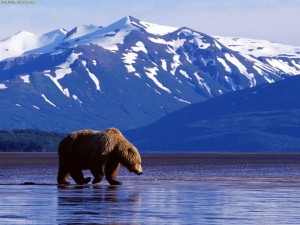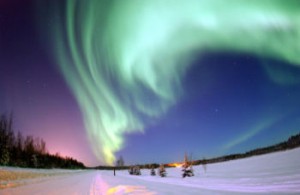 Population of Alaska 2014
Population of Alaska 2014
Based on the total number of births, the total number of deaths, and net migration rate, the most recent calculation of the population of Alaska estimates that, as of July 31, 2013, the population is 736,399 which makes up 0.23% of the total population of the nation. Alaska is the 47th most populous state in the United States. The 2010 Census indicated that the population of Alaska was 710,231. Thus, since the census, the population has grown by over 26,168 people or a growth rate of 3.7%. In fact, Alaska is considered to be the fastest growing state in the country. The 2000 Census indicated that the population of Alaska was 626,858. Thus, since the census in 2000, the population has grown by over 109,541 people or a growth rate of 17.5%. Over the course of the last four years, the population has grown by an average of 6,542 people every year; over the course of the last fourteen years, the population has grown by an average of 7,824.4 people every year. Based on the total population and the total land area of the state, the population density of Alaska is estimated to be about 1.29 people per square mile or 0.5 people per square kilometer.
Government of Alaska 2014
The government of Alaska is organized as a republic, which is made up of three branches: executive, legislative, and judicial branch. The executive branch consists of the Governor of Alaska, the Lieutenant Governor, and other constitutional officers that are elected by the people. Since July of 2009, the Governor of Alaska has been Sean Parnell, a member of the Republican Party. The legislative branch is a bicameral legislation, made up of the Alaska House of Representatives and Alaska Senate. The House of Representatives consists of forty members that serve two-year terms, and the Senate consists of twenty members that serve four-year terms. Since January of 2009, the Speaker of the House has been Mike Chenault, a member of the Republican Party. Since January of 2013, the President of the Senate has been Charlie Huggins, a member of the Republican Party. The judicial branch has four levels: the Alaska Supreme Court, the Alaska Court of Appeals, the superior courts, and the district courts. Since July of 2012, the Chief Justice has been Dana Fabe. Traditionally, Alaska is considered to lean Republican in its politics and election results. In fact, no other state has voted for a Democratic presidential candidate fewer times.
Education in Alaska 2014
The Alaska Department of Education and Early Development administers the public primary and secondary schools throughout the majority of districts. StudentsFirst is an organization that evaluates the performance and productivity of education systems throughout the country. On a 4.0 scale, the state of Alaska received an overall grade point average of 1.21, which ranks 33rd in the nation. The organization ranks the states in three categories: elevating the teaching profession, empowering parents, and spending wisely and governing well. Alaska ranks 30th in the category of elevating the teaching profession. One weakness in this category is the decision to lay off non-tenured professors before laying off tenured professors, solely due to seniority and not efficiency and effectiveness. In the category of empowering parents, Alaska ranks 37th, but also received a failing grade. One thing that Alaska does not do is they do not give each school an annual report card, which grades the school on an A-F scale based on the overall student achievement. However, the state has begun a similar process by initiating a report card of the schools on a 100-point scale. It is also difficult for parents to petition to turn around any school that is not performing very well. There are also a very limited number of quality school options in Alaska. However, while the state struggles with the first two categories, Alaska ranks 9th in its ability to spend wisely and govern the schools well. The main reason for this high ranking is the state’s ability to make teacher pensions affordable and fair. Alaska is the leading state in its ability to provide newly hired teachers reasonable and fair retirement options. However, over the course of the past year, the state has begun to put teacher and principal evaluation processes in place in order to help fix the inefficiency and ineffectiveness in schools. Another issue that the Alaskan education system struggles with is the higher academic achievers in the state tend to leave the state without returning due to the lack of higher educational opportunities. Lastly, the percentage of incoming high school students that graduate in four years is 75.5%, which is an improvement from 64.1% of students five years ago. Lastly, the infant mortality rate has decreased over the course of the past year from 6.3 deaths per 1,000 infants to 5.2 deaths per 1,000 infants.
Health of Alaska 2014
As of January of 2014, the total uninsured population of Alaska was about 129,000, or 17.5% of the population. Some challenges that the state faces in terms of its health are the high violent crime rate, the high incidence of Chlamydia infections, and the low immunization coverage among children. However, in 2013, the violent crime rate decreased from 688 offenses per 100,000 people in 2007 to 603 offenses per 100,000 people. But, in the past year, immunization coverage for children decreased from 64.7% to 59.5% of the children aged 19 to 35 months. The strengths of health in Alaska include low levels of air pollution, a low prevalence of low birth weight, and a small disparity in health status by educational attainment. In fact, 54% of adults in Alaska over the age of 25 years with at least a high school education indicated that they felt their health was either very good or excellent, in comparison to the 34.3% of adults with less than a high school education that indicated that they had very good or excellent health. About 15% of the Alaskan adult population smokes. Over the course of the past year, binge drinking has decreased from 20.8% of the population to 16.8% of the population.
Attractions in Alaska
Language in Alaska 2014
Currently, the only official language of the state of Alaska is English. However, this past January, state legislators proposed a bill that would add twenty native indigenous languages to the list of official languages. The bill is intended to prevent these languages, which are important to the culture of the native tribes, from becoming obsolete and forgotten. In fact, a total of 5.2% of the population speaks at least one of the twenty-two native languages, which belong to the Eskmo-Aleut and Na-Dene language families. As of 2007, about 85% of people over the age of five solely spoke English at home, 3.5% solely Spoke Spanish, and about 2.2% solely spoke some Indo-European language.
 Cost of Living in Alaska 2014
Cost of Living in Alaska 2014
The Anchorage Consumer Price Index is the only cost of living measurement in the state of Alaska. However, it is the state’s most important measurement and can predict the statewide inflation rate. From 2011 to 2012, there was only a 2.2% change in the consumer price index in Anchorage, which was a decrease in the change from 2010 to 2011. Overall, the Anchorage CPI tends to be less than the United States average. However, the energy costs in Alaska tend to be much higher than the United States average. Lastly, due to the introduction of big-box stores, the prices of many common goods fell.
Other Resources


